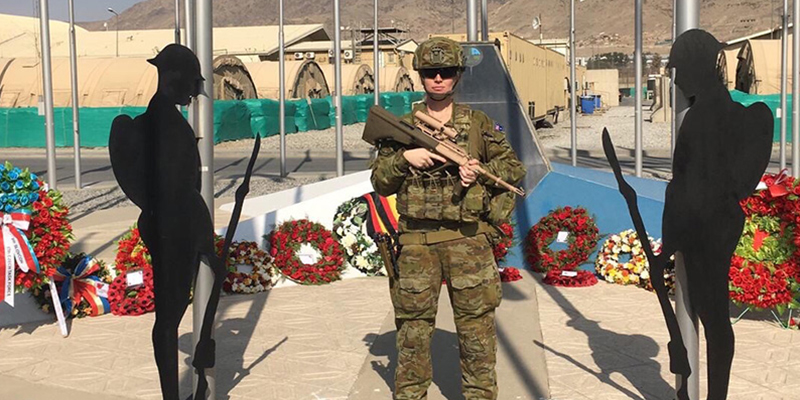Andrew Petrie wrote in his journal, there is a tone of wild freedom, a breath from a clean and untrammelled land and an unknown river.
On May 5, 1842 he made sail for the Black Swan River arriving at 2pm, but with the low tide and heavy surf breaking on the bar, he was afraid to enter.
It was during the next 20 years that European settlers made their way up the river in search of the “red gold” of cedar wood from the virgin rainforests which had never heard the echoes of the axe fall.
European settlement moved like an incoming tide up the beautiful river, a thoroughfare of clean water leading back to the hills of Yandina and Eumundi.
There are many memories of the pioneer families, such as the Peatling and Wilkins who sailed from Brisbane on William Pettigrew’s steamship “Tarshaw”.
They then transferred onto a small boat about 3 kilometres from the river mouth, which took them to a wharf on Parson’s selection.
Their journey continued through thick ti-tree swamp named the Big Angel to finally arrive at their selections.
Their first houses were made of ti-tree logs with bark sides and roof.
The necessities of life such as flour, tea, sugar and candles were ordered from Hutchins in Brisbane and transported to Maroochydore, then delivered by the paddle-steamer “Tardorna Rajah” to Parson’s Wharf.
Visits to neighbours were either by row boat or foot.
In an interview Mrs Maggie Perren nee Wright remembered growing up along the river on her family’s farm, growing coffee, tobacco, pawpaws and other fruit.
Maggie and her three brothers and four sisters waited for the “Tarshaw” coming over the bar at Maroochydore, it would give three prolonged toots to let people know it was on its way in.
When Maggie was about 14 years old her father was felling timber up at Buderim, but he had to get all his supplies from home.
It was Maggie and her elder brother William’s job to load the boat with supplies and row up Eudlo Creek to where their father would meet them.
There were many nights when Maggie and her brothers and sisters would embark on a fishing adventure.
Rowing a boat in the shallows and around the islands of the river, the children, using lantern light, speared fish and crabs to add variety to the family’s mealtimes.
Not all were good times, Peter Stevens selected a parcel of land and decided to build a wharf and store for goods carried by William Pettigrew’s steamers “Tadorna Radjah” and “Tarshaw”.
According to an entry in Mr William Pettigrew’s dairy on September 2, 1890, he went up the river in “Tardorna Radjah” with Wilcox. The pontoon at Stevens Wharf had sunk that morning with 63 casks of cement, 13 bales of chaff and other goods. The punt had been overloaded and probably grounded on falling tide, the top plank was under water.
It was not a very good day for Mr Steven’s at Steven’s Wharf.
Timber and cane were not the only early industries. A number of early selectors from the 1860s tendered for land along the Maroochy River.
In the 1940s, Marshall Espin started clearing vegetation on his selection and constructed drains and floodgates at the outlet to the river.
He planted small crops but rains and cyclones caused high tides and strong winds that caused water to flow over the floodgates.
Once the water receded his crops were ruined and the soil became very acidic and salty, he didn’t attempt to farm his land again.
The river with its meandering beauty and its archive of rich histories can be summed up by the eloquence of a 1923 report in the Nambour Chronicle.
“The beauty of the river with its wonderful natural vegetation broken in parts by the cane fields stretching down to the river and the verdant hills of bananas, pawpaws, oranges and mandarins.
“Houses dot the river banks and these hardy sons of the soil seem contented with their lot and have a cheery word or joke for all. Far from the maddening crowd, a free, open-air and healthy life.”
Thanks to Sunshine Coast Council’s Heritage Library Officers for the words and Picture Sunshine Coast for the images.
Image details
Hero image – Group on a boating trip along the Maroochy River, 1904. Picture taken on the Maroochy River bank below Peter Stevens selection.
Image 1 – Steamers ‘Tarshaw’ and ‘Tadorna Radjah’ at anchor in Maroochy River, 1888
Image 2 – Paddle-steamer ‘Tadorna Radjah’ unloading supplies in upper Maroochy River, ca 1890
Image 3 – River boat ‘Ariel’ leaving for Maroochydore from Coulson’s wharf at Coolum Creek, Yandina, ca 1925M863562 – ‘Hazeldean’ on Petrie Creek, 1919
Image 4 – Timber-getters at Edward Browne’s slab home, near the Maroochy River at Yandina, ca 1904. The property and slab home was originally selected by Peter Stevens in 1878 and acquired by Browne ca 1904. Stevens was timber getting along the Maroochy River by 1869. He constructed a wharf and store for goods carried by the steamers.
Image 5 – Marshall and Mike Espin pictured among the crew sailing the boat ‘Dixie’ on the Maroochy River, Maroochydore, ca 1915
Image 6 – Passenger boats on Maroochy River below Dunethin Rock, ca 1910
Image 7 – Pawpaw plantation overlooking the Maroochy River, ca 1930
Image 8 – Passenger boat at the first Dunethin Rock jetty, Maroochy River, 1920s
Image 9 – Thomas O’Connor (in boat) and the Tatnell family with a haul of fish on the banks of the Maroochy River, 1907
Image 10 – Harold and Michael Wells loading banana suckers on to a boat on Petrie Creek, Bli Bli, ca 1920. Bananas and other locally grown produce was collected from properties along Petrie Creek and other tributaries of the Maroochy River and transported by boat to Maroochydore.




